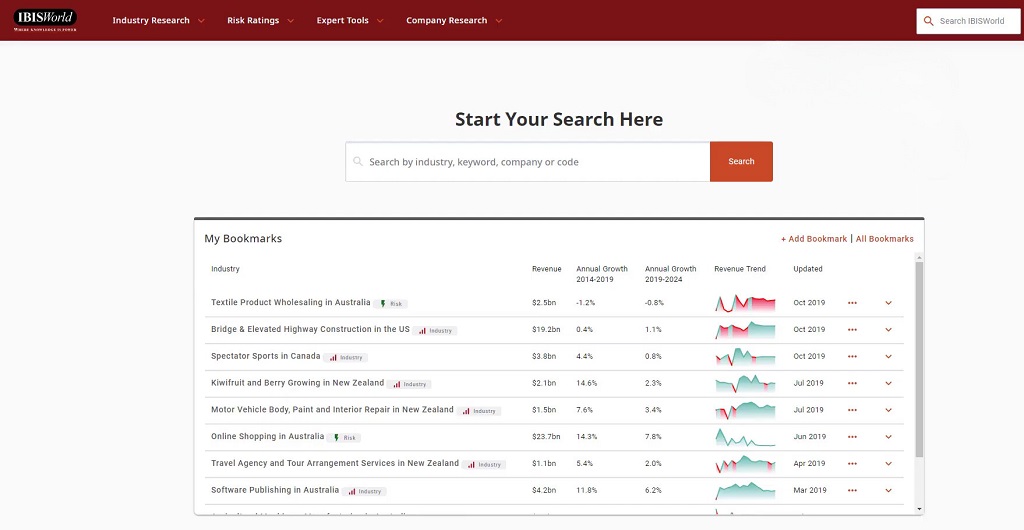
Expanding your business into new markets is a bold step toward growth, offering the chance to reach new customers, increase revenue, and strengthen your brand on a larger scale.
Success in this venture depends on preparation, strategy, and an understanding of the unique challenges that come with entering unfamiliar territory.
This guide provides straightforward, practical steps to help you navigate the process, from researching market opportunities to building a solid plan for long-term success.
With the right approach, you can take your business to new heights and make a lasting impact.
Research Target Markets

Entering a new market requires accurate and thorough research to understand its dynamics, opportunities, and challenges. Businesses often fail in new territories due to assumptions rather than relying on real data.
Research ensures a clear understanding of the following:
- Size and Growth Potential: Is the market worth entering? For example, the global electric vehicle market was valued at $458 billion in 2021 and is projected to reach $1.8 trillion by 2030.
- Cultural Preferences: Knowing cultural nuances can drive success. McDonald’s success in India is a result of offering a vegetarian menu tailored to local preferences.
- Competitive Landscape: Learn from competitors’ strategies. For instance, Amazon studied local e-commerce leaders in India, like Flipkart, to adapt its approach.
- Consumer Behavior: Understanding habits such as spending, payment preferences, or digital consumption. For example, mobile-first markets like Indonesia require apps optimized for low-bandwidth use.
Steps for Effective Research
-
Analyze Data Sources:
IBISWorld’s Industry Research Reports|YouTube Screenshot/IBISWorld Utilize reports from trusted sources like Statista, McKinsey, or IBISWorld. For example, IBISWorld reports that China accounts for 45% of the global textile market, making it lucrative for fashion businesses.
-
Conduct Surveys and Focus Groups:
Direct feedback from potential customers ensures alignment with expectations. For instance, Airbnb used local focus groups in Asia to tweak its service offerings. You should also consider adding welcome kits or some other type of motivation to get more people interested in surveys.
-
Assess Demand:
Tools like Google Trends and SEMrush can reveal demand trends for products. For example, searches for “sustainable packaging” surged 82% globally in 2023, indicating a growing opportunity in eco-friendly industries.
-
Understand Regulations and Taxes:
Researching legal frameworks ensures compliance. For example, the European Union’s GDPR heavily influences businesses handling user data, impacting tech companies entering the region.
Example: Global Expansion of Netflix

Netflix used market research to prioritize local content production in places like Korea and India.
By investing $500 million in South Korean shows, Netflix gained millions of subscribers in the region. Research revealed local preferences for K-dramas, driving the decision.
Tools and Resources for Research
| Tool | Purpose | Example Use |
| Statista | Market trends and forecasts | E-commerce trends in Southeast Asia |
| SEMrush | Keyword and search trend analysis | Popular online shopping terms |
| Nielsen | Consumer behavior insights | Media consumption habits by region |
| World Bank Data | Economic and demographic statistics | GDP growth rates |
| Focus Groups | First-hand consumer insights | Product feature validation |
Create a Business Plan

Expanding into new markets requires a detailed business plan that serves as the foundation for growth.
The plan should clearly define your objectives, target markets, resource allocation, and strategies for mitigating risks.
And if you are still wondering why do you need a business plan, just take a look at the biggest corporations today. Successful global businesses like Amazon and Tesla invested heavily in planning before entering international markets.
Key Elements of the Business Plan
- Market Analysis: Identify the size, growth rate, competition, and customer preferences in the target region. For example, Statista reports that the global e-commerce market is projected to grow by over 10% annually until 2027, but specific markets, like Southeast Asia, are growing at an even faster rate.
- Goals and Metrics: Define measurable goals. For instance, if your objective is to gain a 5% market share within two years, outline specific steps to achieve this.
- Budgeting and Funding: Specify how much capital is required for entry, including marketing, hiring, and operational costs. McKinsey advises setting aside 10-15% of revenue for expansion-related marketing in competitive markets.
- Target Audience: Include data on consumer behavior in the target market. For example, research from Nielsen highlights that Asian markets prioritize mobile payment options, making it essential to adapt payment systems accordingly.
- Competitive Advantage: Explain what sets your product apart. If entering a market with established competitors like Europe’s saturated EV industry, focus on unique selling points such as sustainability certifications or price efficiency.
- Risk Mitigation: Assess risks like currency fluctuations or cultural misalignment. Recent examples, such as Netflix adapting its pricing strategy in India, show how companies mitigate risks by localizing offerings.
Be Aware of Local Laws
Failing to comply with local laws can lead to fines, business closures, or reputational damage. Companies like Uber faced major challenges in markets such as Germany due to regulatory non-compliance.
Key Areas of Local Law to Research
Business Registration and Permits
Each country has specific requirements for setting up a business. For example, in China, foreign companies must partner with a local entity to establish a joint venture for market entry.
Taxation Laws
Tax structures vary widely. In India, the Goods and Services Tax (GST) applies to most business activities, while in the United States, companies deal with both federal and state taxes.
Deloitte’s 2023 Global Tax Guide provides detailed overviews of tax regulations in over 150 countries.
Employment and Labor Laws
Understanding employee rights, wages, and benefits is critical. For example:
In the European Union, employers must comply with strict labor laws, including a mandatory 14-week parental leave policy.
In the UAE, laws specify a 48-hour workweek limit.
Trade and Tariff Regulations

Import-export rules can impact supply chains. For example, the U.S.-China trade war imposed tariffs on over $550 billion worth of goods, significantly affecting global supply chains.
Consumer Protection Laws
Markets like the EU enforce strong consumer protection laws, including the right to refunds and replacements. Amazon faced significant scrutiny for alleged violations in Germany due to these laws.
Data Protection and Privacy
With increasing global focus on data privacy, regulations like GDPR in Europe and CCPA in California are critical for businesses handling customer data. Non-compliance can result in fines of up to €20 million or 4% of annual revenue under GDPR.
Set a Financial Strategy
Companies often underestimate the costs associated with entering a new market, such as legal fees, marketing expenses, and unexpected operational challenges.
A well-structured financial strategy accounts for all these factors and provides a roadmap for sustainable growth.
Key Elements of a Financial Strategy for Expansion
-
Cost Analysis and Budgeting:
Detailed budgeting is essential to avoid financial strain. Costs to consider include:
- Licensing and registration fees.
- Local marketing and advertising expenses.
- Infrastructure or office setup costs.
Example: Starbucks allocates approximately $375,000 for opening a new store in international markets, covering real estate, training, and marketing costs.
-
Funding and Investment Planning:
Tesla global expansion|YouTube Screenshot/Ryan Shaw Securing capital is crucial for market entry. Options include:
- Venture capital or private equity for startups.
- Bank loans or government grants for established businesses.
Case: Tesla raised $226 million through its IPO in 2010, which funded its global expansion and R&D efforts.
-
Currency Exchange and Risk Management:
Fluctuating currency rates can impact profits. Hedging strategies, such as forward contracts or options, can help mitigate risks. For example, Procter & Gamble uses currency hedging to protect its global operations against currency fluctuations.
-
Revenue Projections:
Forecasting revenue based on real market data helps set realistic expectations. For instance, Amazon projected its revenue in India to grow by 30% annually and achieved $4.4 billion in sales in 2023.
-
Taxation Strategy:
Understand tax obligations in both the home and target markets. Double taxation agreements (DTAs) can help reduce tax burdens for multinational companies.
-
Profit Reinvestment:
Many companies reinvest initial profits back into the business to scale operations. Example: Walmart reinvested profits in its supply chain network to dominate international retail markets.
Example: Coca-Cola’s Financial Strategy for Global Growth
Coca-Cola’s expansion into emerging markets like Africa relied on a clear financial strategy.
The company invested $17 billion between 2010 and 2020 to expand distribution channels, adapt pricing strategies, and develop local bottling partnerships.
Tools and Resources for Financial Planning
| Tool | Purpose | Example Use |
| QuickBooks | Expense tracking and budgeting | Monitoring local expenses |
| Xero | Financial reporting for businesses | Managing global accounts |
| Bloomberg Terminal | Market analysis and financial data | Currency trend forecasting |
Define a Market Entry Plan
A market entry plan determines the most effective way to launch products or services in a new region. This strategy includes selecting the right entry mode, pricing approach, and distribution channels.
Exporting
Selling products directly to the target market. Example: Boeing primarily relies on exports to serve global clients.
Licensing or Franchising
Allowing local businesses to use your brand or technology. McDonald’s uses franchising as its core entry strategy worldwide.
Joint Ventures
Partnering with local companies. For instance, Starbucks entered China through a joint venture with local firms to navigate regulatory challenges.
Direct Investment
Establishing a physical presence, such as a manufacturing plant. Tesla built a gigafactory in Shanghai to reduce costs and serve Asian markets more efficiently.
Use Technology for Expansion

Technology plays a critical role in scaling operations, improving efficiency, and reaching global audiences.
- E-commerce Platforms: Shopify enables businesses to sell internationally with integrated payment and shipping options.
- Customer Relationship Management (CRM): Salesforce helps manage customer interactions across multiple regions.
- Communication Tools: Slack and Zoom ensure seamless collaboration with international teams.
- AI and Data Analytics: Google Analytics and Tableau offer insights into customer behavior and market trends.
FAQs
How can businesses test a market before fully committing to expansion?
Start with a pilot program, limited product launch, or partnerships to gauge demand and adapt strategies before a full-scale entry.
What role do local competitors play in shaping market entry strategies?
Analyzing competitors helps identify gaps, refine pricing, and differentiate products to meet unfulfilled customer needs.
How important is language adaptation in new markets?
Adapting language for marketing, product labels, and customer service is critical. Miscommunication can lead to poor customer engagement.
Should businesses focus on urban or rural markets first?
This depends on the product and target audience. Urban areas often have higher purchasing power, while rural markets may offer untapped potential.
How do currency exchange rates impact financial planning?
Fluctuations in exchange rates can affect profits and costs. Using hedging tools or pricing in stable currencies helps mitigate risks.
Last Words
Expansion into new markets allows businesses to grow and reach wider audiences. Success depends on preparation, addressing challenges effectively, and committing to the specific needs of each region.
With a clear focus, businesses can secure their place and build strong foundations for the future.
Read Next – O Novo Mundo 2024


















